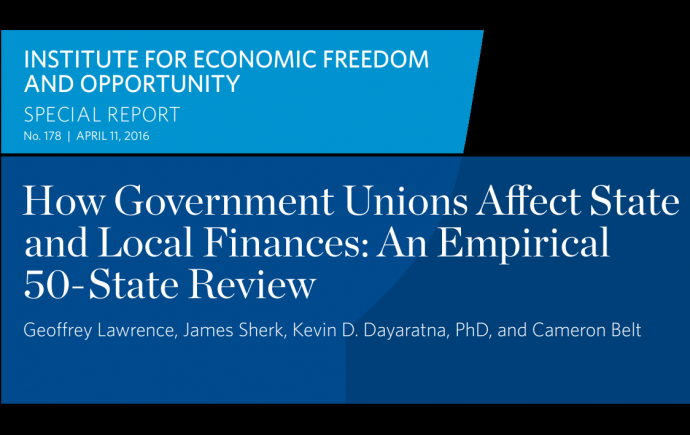There is so much ammunition for conservatives to use — and little of it gets used. Here’s the executive summary from the above-titled Heritage Foundation report:
Over the past half-century, the American union movement has moved into government. Despite highly publicized efforts to curtail collective bargaining powers of government unions in Ohio and Wisconsin, almost all changes to government collective bargaining statutes over the past 20 years have increased, not decreased, the powers enjoyed by government unions.
This Special Report seeks to determine the extent to which unionization has increased the cost of state and local governments using three different econometric methods: (1) synthetic control, (2) regression analysis, and (3) Bayesian analysis. It includes a thorough review of statewide collective bargaining statutes across all 50 states and compares changes in these laws with changes in spending over the past six decades.
Using synthetic-control case studies, we find that collective bargaining significantly increased the cost of government for New York and New Jersey taxpayers, but had statistically insignificant effects in Ohio and South Dakota.
Expanding our analysis to use panel data for the entire country from 1957 to 2011, we find that mandatory collective bargaining increases government compensation, with little offsetting reduction in overall government employment. Instead, total state and local government spending increases by approximately $600 per person, per year. This represents a $2,300 greater annual tax burden on the average family of four.
Bayesian analysis shows an even larger effect, with mandatory collective bargaining increasing the cost of government operations by more than $750 per person, per year. This represents a $3,000 greater annual tax burden on the average family of four.
Across the United States, government unions increased spending by state and local governments by almost $127 billion in 2014, according to our regression results, and by $164 billion, according to our Bayesian results. These cost increases are concentrated in the states that grant the most aggressive powers to union leaders.
Read the entire report: The Heritage Foundation

